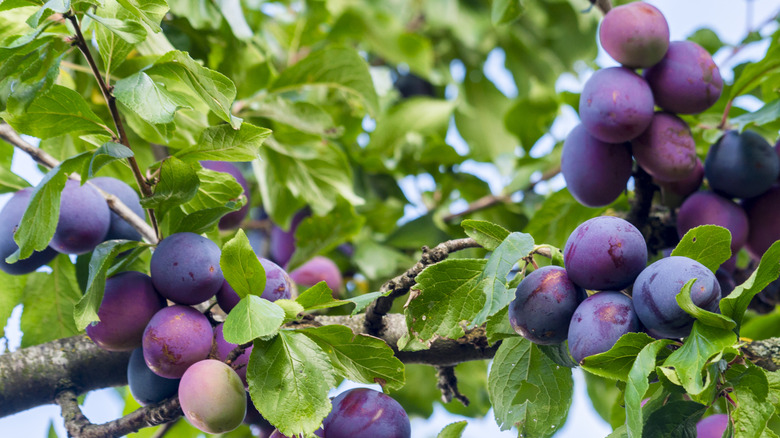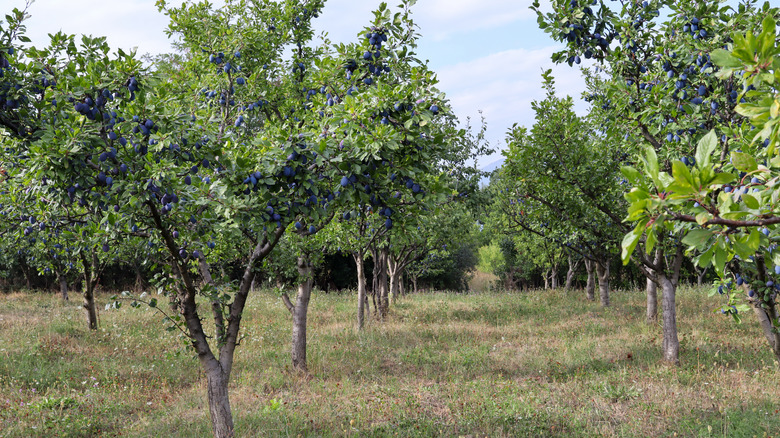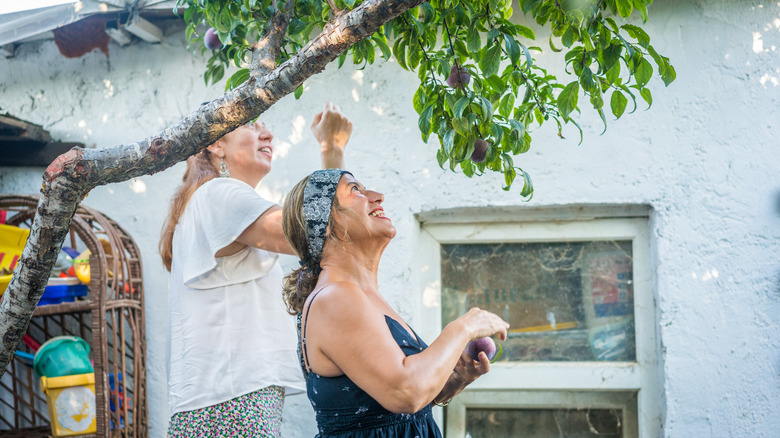The Surefire Way To Make Sure Your Plum Tree Produces Fruit
You spotted a beautiful plum tree at your local garden center, brought it home, created the ideal soil composition, and ensured it received the right amount of light. When you thought you would be picking plums for your favorite recipes, you couldn't because nothing grew. The problem could have been the lack of a second plum tree planted nearby. Though some plum trees are considered self-fertile, many varieties require a second tree to spur the process. To make sure you get results, you should have at least two plum trees growing as a pair.
Other factors play a role in the success of plum trees. For example, you'll need well-drained soil that's not too clay-heavy to allow the root system to establish and grow. They also tend to need a significant amount of direct light, with many varieties requiring at least 6 hours each day, if not more. Some plum varieties are so temperamental they don't do well in areas that are too windy, especially if there's the risk of a late frost, but will thrive in a more sheltered and secluded area. Plum trees also require ample space, with smaller versions needing 10 to 15 feet of space between them and larger varieties requiring as much as 25 feet of room. This gives the trees ample space to grow and spread their branches — so they can soak up the sunlight they need.
The importance of having two plum trees
Even though many of these trees are self-fertile or self-pollinating, partnering them up encourages better fruit development and growth. During the spring months, when plums bloom, having several trees near each other offers more opportunities for cross-pollination, thus increasing the yield for each tree. In some situations, this can also help support better-quality fruit growth, with the potential for larger and better-flavored fruit.
Some types of plum trees, such as American hybrid varieties (Prunus nigra) and Japanese types (Prunus salicina), must have a second variety to cross-pollinate with in order to produce fruit. These types of plum trees are considered self-sterile. That means that the pollen produced by that tree will not be effective in fertilizing the flowers on the same tree. They need a plant of the same species to cross-pollinate. Note that, unlike apple trees, which only need a closely related plant for cross-pollination, plum trees often need the same species close enough to encourage pollination. They also need pollinators to move from one tree to the next to fertilize the flowers and start fruit production. There are also some plum trees known to be partially self-fertile. If this label exists, it means the trees could self-pollinate but require very specific conditions to allow for it.
What to do in limited space areas
There are some times when, even though you may want a second plum tree, you just don't have enough space. This can seem restricting since even smaller varieties require ample room between them. There are several routes to consider here. First, choose the best plum tree for your space, selecting a dwarf variety when possible. In addition, some varieties, like European plum trees (Prunus domestica), tend to be better at self-pollination than other varieties. This means better results in many situations.
Another option for encouraging better fruit development within a limited space is to consider using smaller varieties in containers. This could provide you with more space to position these trees. Many of the dwarf varieties will do well in this type of environment if they have quality potting soil — and the container itself is large enough to support their needs. Yet another option could be to discuss sharing some plum recipes with your neighbors. Since plum trees can pollinate with trees 100 feet or more from them, you could also expand your pollinating area by convincing a neighbor to plant a tree. This will depend on the variety, but many versions, especially standard-sized trees, will pollinate over some distance as long as you welcome pollinators into your yard.


